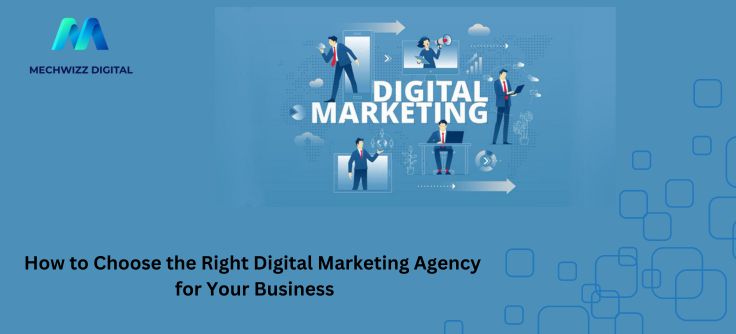
In the ever-evolving world of digital marketing, measuring content effectiveness is paramount. Content marketing is a powerful tool for building brand awareness, engaging your audience, and driving conversions. However, it's not enough to just create and publish content; you need to know if it's working and, if not, how to improve it. In this blog, we'll explore the importance of measuring content effectiveness and provide you with the tools and strategies to do so effectively.
The importance of measuring content effectiveness
Before diving into the nitty-gritty of metrics and tools, it's crucial to understand why measuring content effectiveness is so vital.
Content marketing is a significant investment in terms of time, effort, and resources. Without measurement, you're essentially flying blind. Measuring content effectiveness allows you to:
1. Evaluate ROI: Determine if your content efforts are providing a return on investment.
2. Optimize Strategy: Identify what's working and what's not, enabling you to refine your content strategy.
3. Improve Engagement: Enhance your ability to engage your target audience and build brand loyalty.
4. Make informed decisions: Base your content decisions on data rather than intuition.
5. Adapt to Changes: Adjust your content strategy in response to shifting goals, trends, and audience preferences.
Setting the stage for successful content marketing
Setting the stage for successful content marketing is a critical step. It lays the foundation for effective content creation, distribution, and measurement. Without a solid plan in place, your content marketing efforts can become disjointed and less likely to achieve your objectives.
Defining Content Effectiveness
"Effective" content can vary widely from one business to another. It might involve generating leads, increasing brand awareness, boosting sales, or educating your audience. Understanding what effectiveness means for your business is the first step. Your content goals and objectives should be Specific, Measurable, Achievable, Relevant, and Time-bound (SMART).
The role of goals and objectives
The role of goals and objectives in measuring content effectiveness is pivotal. Without well-defined goals and objectives, it's challenging to determine whether your content marketing efforts are successful. This includes –
- Setting Clear Definition
- Elaborating Success
- Focusing on Efforts
- Measuring the Progress
- Optimising Strategy
- Alignment with Business Objectives
- Motivating the Team
- Improving Accountability
- Adapting to Changing Circumstances
Key Metrics for Measuring Content Effectiveness
To measure content effectiveness, you must rely on a set of key metrics that provide valuable insights into how your content is resonating with your audience. Here are the key metrics you need to focus on:
A. Traffic and Engagement Metrics
1. Pageviews: Pageviews represent the total number of times a specific web page or piece of content has been viewed. They are a fundamental metric for assessing content visibility and popularity. An increase in pageviews can indicate that your content is attracting more visitors and gaining traction. You can use them to identify your most popular content. This insight can guide your future content strategy by helping you create more of what your audience finds engaging.
2. Unique visitors: Counting distinct individuals who have visited your content, this metric measures the breadth of your audience. It reveals how many different people are engaging with your content. Understanding unique visitors helps assess audience diversity and growth over time.
3. Time on page: This metric is the average time visitors spend on a specific web page or content piece. Longer time on page suggests higher engagement, indicating that visitors are finding value in your content. Use this metric to identify content that captures audience interest.
4. Bounce rate: The bounce rate represents the percentage of visitors who leave your website after viewing only one page. A high bounce rate may indicate a lack of engagement or relevance in your content. Analyse specific pages with high bounce rates to identify issues and make improvements.
B. Conversion Metrics
1. Click-through rate (CTR): CTR is the ratio of clicks to impressions, often used for email campaigns, ads, or specific calls to action. It measures how effective your content is at driving desired actions. A higher CTR means your content persuades users to take the desired action. Analyse CTR to optimise content and design elements for better engagement.
2. Conversion rate: Conversion rate measures the percentage of visitors who take a desired action, such as making a purchase or signing up for a newsletter. It's a direct measure of content's impact on your business objectives. A higher conversion rate indicates effective persuasion. Use this metric to identify high-converting content and optimise other pieces for enhanced conversions.
3. Cost per conversion (CPC): CPC represents the cost incurred to acquire a single conversion, often used in paid advertising campaigns. A lower CPC signifies cost-effective marketing and a better return on investment (ROI). Analyse CPC to adjust your advertising strategy for optimal ROI.
C. Social Media Metrics
1. Likes, shares, and comments: These are engagement actions on social media platforms, indicating user interaction with your content. High engagement suggests your content resonates with the audience. Analyse this data to create similar content that garners more user interaction.
2. Follower growth: Follower growth tracks the increase in your social media following over time. A growing following reflects the appeal of your content and its ability to attract a broader audience. Monitor follower growth to gauge the impact of your social media content strategy.
D. SEO Metrics
1. Keyword rankings: Keyword rankings indicate where your content appears in search engine results pages (SERPs) for specific keywords. High keyword rankings are essential for improving content visibility in search engines and potentially driving organic traffic. Monitor rankings to identify content that ranks well and keywords that need optimization.
2. Organic search traffic: Organic search traffic measures the number of visitors coming to your website through search engines, indicating content visibility and SEO effectiveness. An increase in organic search traffic signifies content's effectiveness in attracting more visitors. Analyse this metric to refine your SEO and content strategy.
E. Customer Feedback Metrics
1. Surveys and feedback forms: Surveys and feedback forms collect direct input from your audience about their content experience. They provide qualitative data to understand user experience and gather suggestions for improvements. Act on the feedback received to make content adjustments and demonstrate your commitment to audience needs.
2. Net Promoter Score (NPS): NPS measures customer loyalty and their likelihood to recommend your content or brand. A high NPS indicates strong customer loyalty and suggests that your content is meeting or exceeding expectations. Track changes in NPS over time to gauge the impact of your content on customer relationships and brand advocacy.
Setting SMART Goals
Setting SMART goals is a strategic approach to goal setting that helps you create clear, well-defined objectives that are more likely to be achieved.
- Specific means that your goal should be clear and unambiguous. It should answer the "who," "what," "where," "when," and "why" of your goal.
- Measurable goals are quantifiable, allowing you to track progress and determine when the goal has been reached. This requires using concrete criteria or metrics to assess your goal's achievement.
- An achievable goal is realistic and attainable. It considers the resources, skills, and time available. An achievable goal is challenging but not so ambitious that it's unattainable.
- Relevant goals are aligned with your overall objectives. They make sense in the context of your broader mission and do not conflict with other goals.
- A time-bound goal has a specified deadline. It creates a sense of urgency and helps prevent procrastination.
Tools for Measuring Content Effectiveness
A. Google Analytics: Google Analytics is a versatile web analytics tool that provides comprehensive insights into your website's performance. It tracks traffic, conversions, audience behaviour, and content performance.
B. Social media analytics tools: Social media platforms, such as Facebook, Twitter, and Instagram, offer built-in analytics tools. These tools provide crucial data on engagement metrics like likes, shares, comments, and click-through rates.
C. Email marketing analytics: Email marketing platforms like MailChimp and HubSpot provide detailed analytics for your email campaigns. You can measure open rates, click-through rates (CTR), and conversion tracking.
D. Content management system (CMS) analytics: Content management systems like WordPress and Drupal offer built-in analytics features. They track pageviews, unique visitors, bounce rates, time on page, and keyword data.
E. A/B testing tools: A/B testing tools, such as Optimizely and Google Optimise, enable you to create experiments to compare two versions of your content. You can test different elements, such as headlines, images, or calls to action, to determine which version performs better.
Adjusting Your Content Strategy
A. Using data to refine your content strategy
Data is a treasure trove of insights that can guide your content strategy. By analysing metrics and feedback, you can understand what's working and what's not. Metrics like pageviews, engagement rates, and conversion numbers can highlight your top-performing content.
B. Iterative improvements and optimization
Content strategy is not static; it's a dynamic process that requires continuous improvement. It's essential to iterate and optimise your content regularly. Make data-driven adjustments based on performance data. Test new ideas and approaches.
Common Challenges and How to Overcome Them
A. Data accuracy and interpretation
Challenge
Data accuracy and interpretation can be challenging because you need to ensure that the data you collect is reliable and relevant. Interpretation can also be tricky because you must extract meaningful insights from the data.
Overcoming the Challenge
- Data Validation: Regularly verify the accuracy of the data sources you rely on. This includes setting up data validation processes to filter out erroneous or incomplete data.
- Data Training: Invest in training for your team members or use data experts who can interpret and extract valuable insights from the data.
B. Keeping up with evolving metrics
Challenge
Digital marketing and content metrics are constantly evolving. New tools, platforms, and measurement methods emerge regularly, making it challenging to stay current.
Overcoming the Challenge
- Continuous Learning: Stay up-to-date through ongoing education and professional development. Attend webinars, conferences, and workshops focused on content marketing and analytics.
- Adaptation: Be adaptable and open to experimenting with new metrics. Assess the relevance of emerging metrics to your specific goals and audience.
C. Aligning content with changing goals
Challenge
Business goals and marketing objectives often change over time. Content that once supported specific goals may no longer align with new priorities.
Overcoming the Challenge
- Regular Goal Review: Periodically review your business and marketing goals. Ensure that your content strategy remains aligned with these evolving objectives.
- Content Audit: Conduct a content audit to assess the existing content's relevance to your current goals. Consider updating, repurposing, or retiring content that no longer serves a purpose.
Conclusion
The journey of measuring content effectiveness is an ongoing and vital one in the realm of content marketing. It's not merely a tool for accountability but a compass for optimization. Mechwizz Digital, your content marketing partner utilises data-driven decision-making and fosters an environment of iterative improvements and adaptability. This helps navigate this path to excellence, ensuring that their content resonates with their audience and aligns with evolving goals. This commitment to measurement and continuous enhancement is the hallmark of a successful content marketing strategy, promising sustained growth and impact in the digital landscape.





